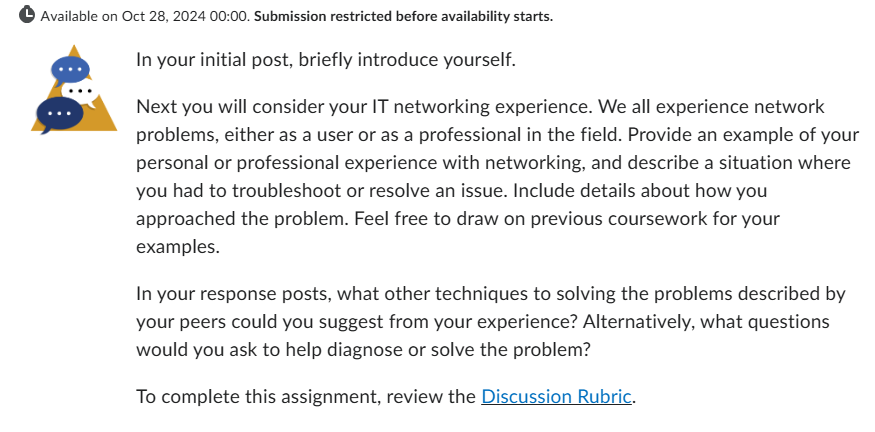CJ 4440 Quizz #1: Week #2: October 21 - October 27, 2024
Due Oct 27 at 11:59pm
Score for this attempt: 10 out of 10
Submitted Oct 26 at 2:43pm
This attempt took 11 minutes.
Question 1 1 / 1 pts
1. The British government define terrorism as "any activity that involves an act that is dangerous to human life or potentially destructive of critical infrastructure or key resources; ..."
Question 2 1 / 1 pts
2. Based on your reading which of the government agency listed below define terrorism as "is intended to produce fear in someone other than the victim"?
A) Federal Bureau of Investigation (FBI)
B) U. S. Department of Defense (DOD)
C) U. S. Department of State
D) U. S. Department of Homeland Security (DHS)
Question 3 1 / 1 pts
3. The USA Patriot Act was enacted with nearly partisan votes in both the Senate and House to provide law enforcement with new authority to assist detection and prevention of terrorism.
Question 4 1 / 1 pts
4. Acts of violence are described as a logical progression of what steps?
A) Reasons, execution, and outcome
B) Systematic, execution, and immediate consequence
C) Organization of thought, execution, and outcome
D) Formation of intent, execution, and immediate consequence
Question 5 1 / 1 pts
5. Law enforcement and Intelligence agencies are experiences most problems in the twenty-first century with detection, infiltration, and prevention of what type of terrorist?
A) Jihadist
B) State-sponsor
C) Lone Wolf
D) Islamic Jihad
Question 6 1 / 1 pts
6. The 1993 bombing of the World Trade Center was the first significant terrorist act in the United States, unlike worldwide terrorism activities in the twenty-first century.
Question 7 1 / 1 pts
7. Based on required reading, which violent acts are defined as terrorist incidents?
- A) 1941 Attack on Pearl Harbor, 1995 Oklahoma City Bombing, and 2000 Bombing of the USS Cole
- B) 1995 Oklahoma City Bombing & 2000 Bombing of the USS Cole
- C) 1941 Attack on Pearl Harbor & 2000 Bombing of the USS Cole
- D) 1941 Attack on Pearl Harbor & 1995 Oklahoma City Bombing
Question 8 1 / 1 pts
8. Under Homeland Security Presidential Directive 6, the Department of Homeland Security Secretary established Terrorist Screening Centers (TSCs) in September 2003 to consolidate the watch list for the lawful use of terrorist information in screening processes.
Question 9 1 / 1 pts
9. Identified reasons for RCMP and CSIS joint investigation failures that span over twenty years regarding the bombing of Air India Flight 182, the worst act of terrorism in Canadian history (Spindlove & Simensen, 2018).
- A) Lack of intelligence and investigative tools
- B) Interference and management of the investigation
- C) Lack of investigative tools
- D) Lack of intelligence tools
Question 10 1 / 1 pts
10. Which of the following factors did not contribute to Francois "Papa Duvalier" having Haiti's most prolonged leadership regime?
- A) Decrease the illiteracy rate of Haiti's population to below 70 percent
- B) Use of Secret Police to form a brutal regime
- C) Support of the Haitian Army
- D) Alleged supernatural powers from the practice of Voodoo




